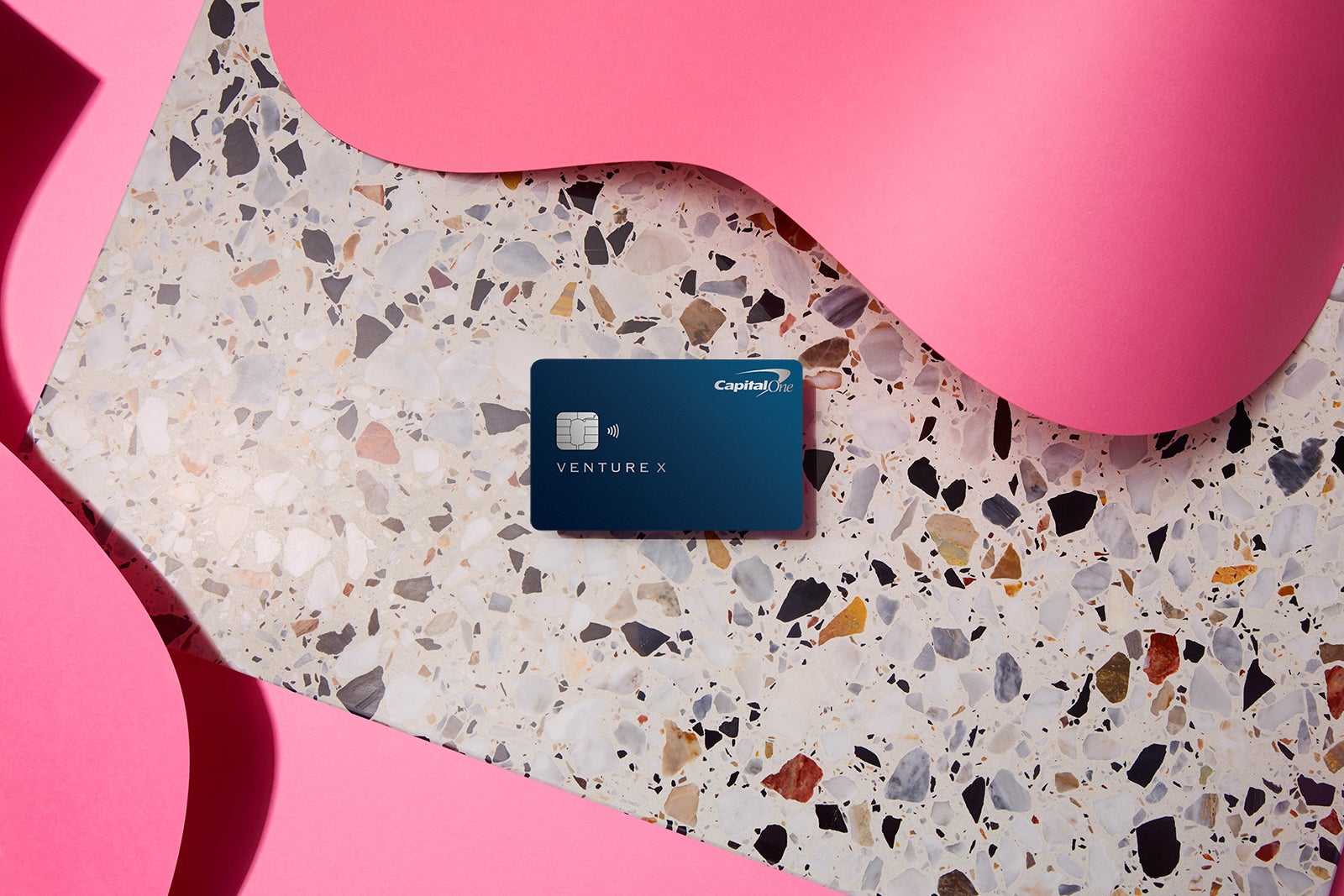Editor’s note: This is a recurring post, regularly updated with new information.
It is a truth universally acknowledged that a couple in possession of an engagement ring must be in want of an epic honeymoon.
Not the exact quote from “Pride and Prejudice,” but it’s the truth all the same. In fact, one of the questions we often get at TPG is how to use points and miles to plan a honeymoon.
It’s also no secret that weddings and honeymoons can be incredibly expensive. The average wedding in the U.S. cost $28,000 in 2021, according to The Knot. Add in an engagement ring (another $6,000) and a honeymoon (an average of $4,466, according to Brides.com), and it’s enough to have any couple researching ways to make honeymoon planning a bit more budget-friendly.
But epic honeymoons don’t have to be wildly expensive or super stressful to plan. At least, not if you follow TPG’s guide to planning a perfect honeymoon. So whether you’re newly engaged (congrats!), already married and planning a belated honeymoon due to COVID-19 or somewhere in between, we’re here to help you plan the honeymoon of your dreams.
New to TPG? See our Beginner’s Guide.
In This Post
Learn the basics of points and miles
Dearly beloved, we are gathered here today to put an end to your relationship with your debit card.
If you’re new to points and miles, it can definitely seem overwhelming at times. What’s the difference between points and miles? What are they actually worth? How do I navigate transfer partners? Can I only earn these things by traveling? Can’t I just use cash back for everything?
All of these are valid questions (and you’re not alone if you’re going through each of them in your head right now). Before you dive into this guide, it’s important to understand the basics. You don’t have to be an expert by any means, but let’s go over the bare bones of what you need to know.
If you already have a handle on credit card rewards, points and miles, skip down to the next section: Choosing your destination.

What are points and miles?
Points and miles are a type of currency that can be redeemed to offset the charge of traveling. For example, you can earn points with Hilton and then use those points to book free nights at hotels.
There are a few different ways to earn points and miles — which we go into more detail with our general beginner’s guide — but the major ones are:
- Credit cards: When you apply for a credit card, you’ll often get a sign-up bonus in the form of points or miles after you spend a certain amount of money in a set period of time. Additionally, you’ll earn points or miles every time you use your card on day-to-day purchases.
- Shopping portals: Airlines and credit card issuers have portals where you can shop online. If you go to your favorite websites through these portals, you can earn points and miles when you shop. These rewards are on top of any points and miles you might earn from using a credit card on the purchase.
- Traveling (flights and hotels): If you are a member of an airline or hotel’s loyalty program, you’ll earn points and miles when you stay or fly with that brand or its partners.
That’s right — you don’t have to travel all the time in order to rack up enough points and miles to go on a (mostly) free trip. In fact, you’ll likely earn more points and miles from everyday spending than you will from setting foot on a plane.
Related: TPG from A to Z: Your complete travel glossary
Are points and miles different than cash back?
Yes. Cash back is always earned and redeemed in dollar amounts — 1% is always worth 1 cent per dollar you spend. Cash back can be a great tool, as it’s easy to use, you don’t have to worry about maximizing value and you never have to worry about your rewards only going toward certain purchases.
However, points and miles have the potential to be a lot more valuable because they aren’t worth a set amount.
For example, let’s say you have a credit card that earns 3% cash back on dining and another card that earns 3x Chase Ultimate Rewards points on dining. On a $100 restaurant bill, that cash-back card will earn $3 in cash back rewards while the other card will earn 300 Chase Ultimate Rewards points.
That $3 in cash back will always be worth $3 when you redeem, but those 300 Chase points could end up being worth closer to $6, depending on how you use them.
How can I use points and miles on my honeymoon?
By doing some research and planning your goals, you can save up points and miles to cover flight and hotel costs just like you would if you were using cash. While you may have to pay taxes and fees on some award bookings, you can save a lot of money — while also upgrading your travel experience in many ways.
Think: Overwater bungalows, business class flights, destinations you otherwise never could have explored. Points and miles can truly unlock a whole new way to travel, and what better way to kick off your points and miles journey than with an amazing honeymoon.
If you want to dive deeper into all things points and miles, check out our beginner’s guide and sign up for our daily newsletter.
Now that you know some of the basics, you can jump into planning — starting with your destination.
Choose your destination
The best destinations for your honeymoon will often depend on what time of the year you’re planning on traveling. I mean, you don’t want to end up in Thailand during the rainy season, do you? No matter which destination(s) you’re eyeing, be sure to do some research first.
Also, consider your budget. While points and miles can help offset a lot of the costs associated with traveling on your honeymoon, you’ll still have to budget for food, drinks, spa treatments and any other expenses you may incur on your trip. Some destinations are naturally more expensive than others, so keep that in mind.
We rounded up a few of our current favorite honeymoon destinations, plus how to get there and stay there on points and miles, just to get you started.
Related: Best honeymoon destinations for any budget
The Maldives

We know: You and everyone else wants to go to the Maldives. With views like these, we can’t say we blame you.
Because of its remote location and clutch of ultra-luxurious overwater bungalows and villas, the Maldives are often considered a once-in-a-lifetime trip. This is where points and miles come in.
With resorts such as The St. Regis, Park Hyatt, The Ritz-Carlton Maldives and Conrad Maldives, your luxury points redemption choices here are some of the best you’ll find. There are also a number of new properties opening in this coveted, including the Hilton Maldives Amingiri.
Just keep in mind that hotel and resort transfer fees from Male International Airport (MLE) can add up pretty quickly, so plan accordingly. It’s a journey and a half to get here, but once you arrive, we have a feeling you’ll never want to leave.
There is a monsoon season in the Maldives, so again, research the best times of the year to visit the Maldives, or be ready for lots of cozy days indoors while rain falls on your overwater villa.
Hawaii

No matter where you end up in Hawaii, you’re in for a treat. It’s pretty much the quintessential honeymoon destination. And, just because it’s popular, doesn’t mean it isn’t great. Hawaii is always worth it. Consider some (brief) sightseeing in Honolulu before heading to the North Shore of Oahu, or flying directly to the lush beaches of Maui or rugged cliffs of Kauai. There’s something for every honeymooning couple here.
If you’ve been (smartly) racking up those points, consider a stay at the Andaz Maui or Grand Wailea. And as for your flights? We’re glad you asked. These are the best ways to get to Hawaii on points and miles.
Related: How to choose the right Hawaiian island for you
Greece

If you’re looking for a honeymoon destination with a little bit of everything — beautiful sunsets over the water, romantic strolls through history-filled streets, afternoon picnics at vineyards and more — look no further than Greece.
Santorini offers a luxury honeymoon experience (and is one of the most popular honeymoon destinations), but you can also head to more underrated spots (such as Paros) for a more intimate honeymoon without as many crowds.
Want to know how to book a trip to Greece on points and miles? We’ve got you covered with our guide on the best ways to travel to Europe. New hotels — including a tranquil lava-themed Hyatt hotel — have been announced lately, which means you’ll soon have even more options on where to book your stay with points.
France

Between the food, the stunning hotels and all of the romantic sites throughout the country, it’s hard to go wrong with a honeymoon in France. Now that France has dropped its testing requirements for fully vaccinated travelers (though you’ll still need a vaccine pass), it’s also easier to plan a trip.
France is another destination with a little bit of everything. Paris is a classic destination with so much history and culture to explore. Nice and Cannes are perfect for honeymooners looking for a French Riviera getaway (each with its own distinct vibe). For couples who are more interested in spending their days skiing and their evenings curling up in front of a fire, there’s the French Alps in the winter.
The good news is that there’s no shortage of ways to book a trip to France on points and miles. Between new Hyatt luxury hotels (including a French winery) and our list of best hotels in France you can book on points, you can find a great option for your perfect honeymoon.
Strategize with cards and spending
Once you pick your destination, you can figure out how many points and miles you’ll likely need for your honeymoon and start strategizing how you’re going to hit those redemption goals.
Possibly the only upside to wedding planning costs is that it’s a perfect time to open a new credit card to take advantage of sign-up bonuses. The right sign-up bonus could get you most of the way to your goal, and many cards offer great travel perks and insurance coverage to elevate your trip and give you some peace of mind when booking.
Picking the right card for you
There are three main types of travel credit cards we’ll talk about today: transferable points cards, cobranded airline cards and cobranded hotel cards.
Cards that earn transferable points (think: the Chase Sapphire Preferred Card) will earn rewards across a wide range of purchases that can then be transferred to partners. Generally, the best cards that earn transferable points also have a way for you to redeem for a fixed-value as well, but transferring can help you get the most value. Cobranded airline and hotel cards will earn rewards for a specific brand’s loyalty program (think: Marriott Bonvoy Points or Delta SkyMiles).
But, not all cards are created equal. You’ll want to choose the right card for you, which means thinking about the categories you’ll be spending the most on and how you want to redeem those rewards.
The good news is that since there are two of you, you can apply for at least two credit cards. Whether you’re both earning points or miles for the same program or focusing on different goals, you can split the wedding expenses and (probably without too much fuss) meet both minimum spending requirements. The result? Two welcome bonuses and double the earning opportunities.
The key here is to decide where you want to go first, and then apply for credit cards with points you’ll be able to use to get there. Here are a few cards we highly recommend, along with links to our guides that can help you research further.
Best sign-up bonus on the market: Capital One Venture X Rewards Credit Card

Annual fee: $395
Sign-up bonus: Earn 100,000 bonus miles when you spend $10,000 on purchases in the first six months from account opening.
Why it’s a great choice: You can’t beat the current sign-up bonus on the Capital One Venture X, especially since wedding expenses will likely make hitting the spending requirement a breeze. But even beyond the sign-up bonus, the Venture X is one of the best travel cards available right now.
You’ll earn 10 miles per dollar on hotels and car rentals booked via Capital One Travel, 5 miles per dollar on flights booked via Capital One Travel and 2 miles per dollar spent on all other purchases. Considering wedding expenses often don’t fall into typical bonus categories, 2 miles per dollar on all everyday spending is key. Additionally, the card comes with a ton of perks, including 10,000 bonus miles on every anniversary, a $300 yearly statement credit on Capital One Travel bookings, lounge access and much more.
You can then use your miles at a 1 cent value to offset travel expenses as statement credits for up to 90 days after each purchase (perfect if you need to purchase your flights or hotel stays before your rewards technically post to your account), or you can transfer them to partners.
Check out the Capital One Venture X card review
Flexible rewards points: Chase Sapphire Preferred Card

Annual fee: $95
Sign-up bonus: Earn 60,000 bonus points after you spend $4,000 in the first three months from account opening — worth $750 when you book for travel through the Chase portal or up to $1,200 when you use transfer partners according to TPG’s most recent valuations.
Why it’s a great choice: If a card with a $395 annual fee gives you a bit of sticker shock, the Chase Sapphire Preferred Card is a great alternative. It has one of the best sign-up bonuses for any card that only charges a $95 annual fee, and Chase Ultimate Rewards is one of the best rewards currencies you can earn — both as a beginner and expert in the world of points and miles. You’ll earn across a wide range of travel and dining purchases, and those rewards can be redeemed through the Chase portal at 1.25 cents each, or by transferring to a number of hotel and airline partners (including United and Hyatt).
Check out the Chase Sapphire Preferred card review
Luxury perks: The Platinum Card® from American Express

(Photo by Isabelle Raphael / The Points Guy)
Annual fee: $695 (see rates and fees)
Welcome bonus: Earn 100,000 Membership Rewards points after you spend $6,000 in the first six months of card membership.
Why it’s a great choice: Like Chase Ultimate Rewards, Amex Membership Rewards are some of the most valuable transferable currencies you can earn. You’ll be able to transfer those points to an impressive list of transfer partners, including Hilton, Marriott and Delta. But the real standout for this card is the extensive array of travel perks that come with the card: elite status with Marriott and Hilton, unrivaled lounge access, a number of annual statement credits and much more. This card can help you rack up the points you need for your honeymoon while also giving you access to benefits that can really help you upgrade your overall experience.
Check out the Amex Platinum card review
Bottom line
Now comes the best part: booking your dream honeymoon!
Once you’ve amassed the points and miles you need, you’ll go through and actually book your trip. You can go through the process of transferring your points, going through partners and booking your travel. Need help with the specifics? Check out our guide on how to book your first award flight using airline miles and how to transfer points from American Express, Chase, Capital One and Citi.
We won’t lie to you and say planning your honeymoon will be a piece of (wedding) cake. But with these tricks up your sleeves, it’s sure to be easier than planning your guest list. And as for the rest of your impending nuptials? You’re on your own for that.
Additional reporting by Samantha Rosen.
Featured photo by Thomas Barwick/Getty Images.
For rates and fees of the Amex Platinum card, please click here.
